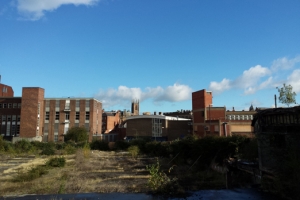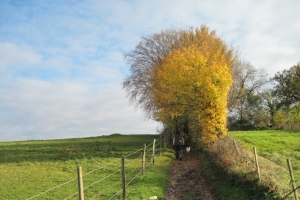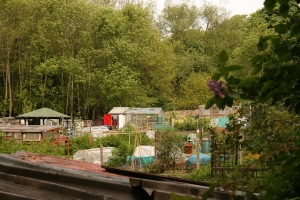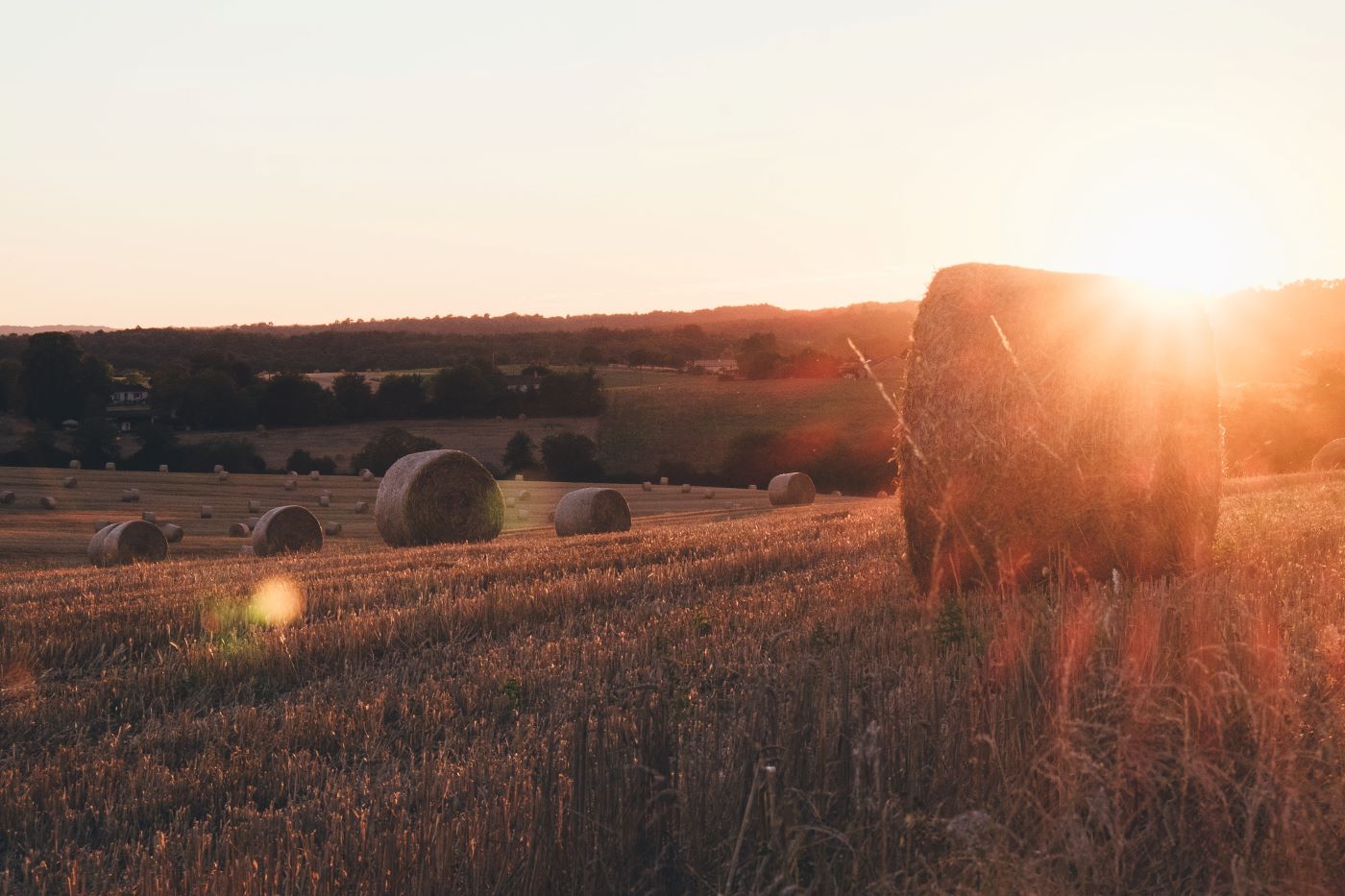The Campaign to Protect Rural England (CPRE) has analysed the Government’s brownfield registers pilot scheme. Employing a variety of conservative methodologies, CPRE now estimates that the available data translates to a minimum of 1.1 million homes on suitable brownfield sites across England. More ambitious methodologies put the figure much higher, towards 1.4 million. This suggests that the Government has previously severely underestimated brownfield capacity.
Much of our countryside and green spaces are at increasing risk from development but we know all too well that there is plenty of previously developed, or brownfield, land across England that is suitable for development but isn’t being used. Indeed, the Government has been slowly accepting this: in the wake of CPRE’s Wasted Space campaign and Wasted Spaces to Living Spaces report in 2014 on the amount of brownfield land available, it has introduced statutory brownfield registers as part of the Housing and Planning Act to help address this issue.
CPRE works closely with communities, local authorities, national Government and other non-profit organisations to campaign for the protection of the Green Belt. We've achieved a lot over time. Read about some of our biggest wins here.
Originally printed in CPRE's Countryside Voice magazine, Spring 2016 issue.
It was around ten years ago that England’s allotment holders noticed something a little strange. While they’d been quietly tending their veg, heads down, minding their own business, allotments had suddenly become the height of fashion. A new generation of avid growers couldn’t wait to get the soil under their nails. And although allotment mania has calmed a little, in some places you’ll still sit on a waiting list for as long as five years before you can start leafing through the seed catalogues.
But allotment holders like Des Edwards would swear it’s worth the wait. Des knows all too well that glow of satisfaction and burst of incomparable flavour you get when you tuck into the season’s first crop of strawberries, grown by your own fair hand. He has a plot on the Leatherhead Poors Allotments, which sit within Green Belt land near junction 9 of the M25 in Surrey. There’s a real history to the place: the people of Leatherhead have been growing food here since the land was gifted back in the 1880s. There are currently 116 allotment holders on a site of 11 acres; a real garden community where novices rub shoulders with green-fingered veterans who have 60 or 70 years of experience. Even the local night shelter for homeless people has its own plot.
But in 2013 Des heard from Mole Valley District Council, which now owns the land, that it intended to sell the site to Barratt Homes as part of plans for a 500-home housing estate in a deal worth £21 million. The allotment holders were shocked and disappointed, but adamant they weren’t shifting, despite offers of a new allotment site from the council. They set up a committee, looked at their options and dug in for a long fight.
‘You’ve got to be optimistic,’ Des says. ‘There are still certain parts of the law that need tested, and there are some quite old laws they have to abide by – they can’t just up and sell it. They have to be in touch with the Secretary of State for Communities and Local Government to get permission, and then we’ll have the chance to tell our side of the story.’
As part of their campaign, the committee successfully applied to have the allotments designated as an Asset of Community Value, which means they will have a right to bid for the land if and when the council does sell it. Their application received more than a hundred statements of support, including one from CPRE Surrey – but even with this strong level of public approval, the allotments’ future still hangs in the balance. The allotment holders could never raise the millions of pounds necessary to buy the land, and everything now is on hold until the council’s Green Belt review is completed: ‘We’re in a waiting game,’ notes Des.
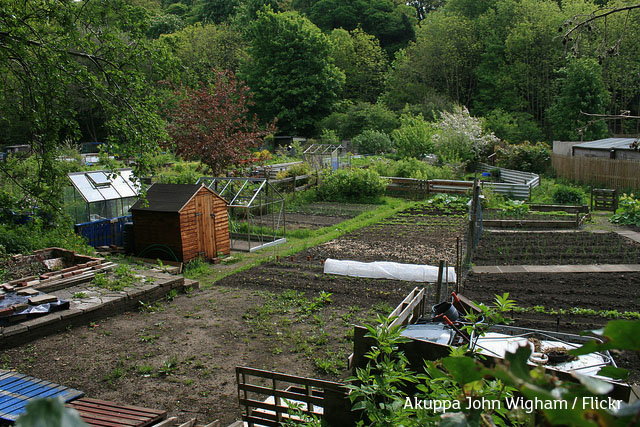
Rooting for change
Three hours’ north, in Stoke on Trent, a less traditional project is demonstrating what a key role allotments can play in their local communities – and not just for those who want to put fruit and veg on their own tables. A spark of an idea, a lot of hard work and support from several different pockets of funding, including a couple of Stoke potteries, led to the founding of Root ‘n’ Fruit, a community food initiative working with food banks and other local groups.
‘The original ethos behind it was to grow food to give away to needy people, because there are a lot of people in Stoke on Trent in food poverty,’ says Root ‘n’ Fruit steering group member Bob Bennett.
Volunteers, nearby schools and groups including the Prince’s Trust Fairbridge programme for 13 to 15 year olds all grow food on Root ‘n’ Fruit’s 600 square metre allotment in Middleport, which is then donated to local people who need it. The group is currently building an outdoor kitchen and hosting a community arts initiative to raise their profile and get more people involved. And the artwork is just as ambitious as the growing plans – if you fancy taking a look at T.E. Lawrence’s Seven Pillars of Wisdom interpreted through the medium of willow, this is the place to see it.
‘You’re never going to feed the whole population through something like this,’ says Bob. ‘But I look at it as a community resource, and somewhere people can learn to grow their own food. It’s about making the connection between growing and eating.’ Finding and keeping volunteers is challenging, but for Bob the sheer pleasure of getting out in the open air and working a piece of land, as well as the health benefits that provides, provide ample incentive: ‘It’s great therapy – and you get tomatoes, as well,’ he smiles.
Allotments for all
There’s a growing body of evidence linking gardening with improved mental and physical health; yet allotments often aren’t practical for people with limited mobility or other disabilities. So when Newcastle City Council found itself with a disused carpark in the east of the city, they decided to turn it into a new allotment that was fully accessible to all. Jim Watson, the secretary of the Fairways Allotments in Heaton, has had an allotment for more than 50 years. When he was younger, Jim grew leeks competitively, and even has a couple of trophies to show for it; but he’s now partially sighted and unable to manage a traditional allotment. However, the 37 plots at Fairways have been constructed so that wheelchair users, people with mobility problems and those with visual disabilities like Jim can garden safely and comfortably. And the idea has gone down a storm: all the plots were snapped up immediately and two years on, they’re still full, proving that successful urban regeneration can mean creating green spaces as well as housing.
‘All the beds are raised – they’re built up to two foot high – and just three foot wide, so you can reach past the middle and they’re easy to work,’ Jim explains. There are also two shared poly tunnels. Some of the plots are held by retired people, who can’t manage a conventional garden and who enjoy the social side of allotment life, while others are worked by people with learning or physical disabilities, sometimes with the help of their carers. Other plots are held by able-bodied people who can help with the smooth running of the site.
Jim believes getting out in the open air and enjoying the company of other gardeners is a real tonic and helping to grow a good crop of fruit and veg does wonders for the self-esteem. These allotments mean he can still enjoy his lifelong interest in horticulture, and help others do the same, despite losing his sight.
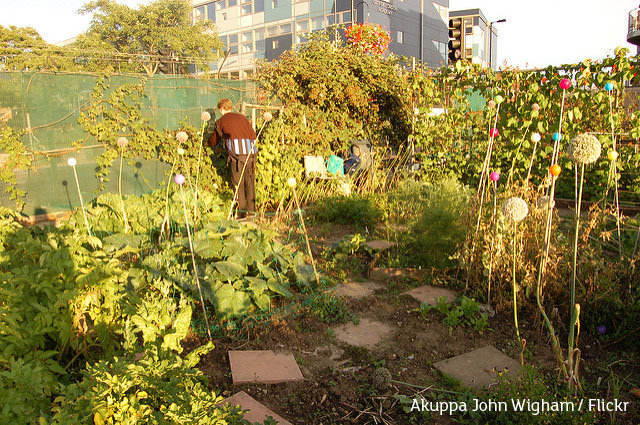
Growing demand
In Newcastle, as in many other areas, allotments are highly sought after; the city’s current waiting list stands at 550 names. Fairways Allotments soaked up a little of that demand when they formally opened in April 2014. And that’s also when the first soil was being dug over on another long-awaited allotment, in Haynes, a village near Bedford.
Haynes may have had eight ‘ploughlands’ when it was mentioned in the Domesday Book in 1086, but in 2006 there was no such land in the neighbourhood for local people to grow their own produce. Villagers were so keen to change this that they established the Haynes Allotments and Leisure Gardeners Association (HALGA), despite the fact there were no allotments there.
Dr Paul Miller is the current chairman of HALGA. ‘My wife used to say that I was on the committee that was going nowhere, because it was six or seven years before we even had any land,’ he says. ‘But we stuck with it.’
And eventually, the waiting paid off. Central Bedfordshire council owned some land next to the village that was let to a tenant farmer, but when he decided to retire, the parish council negotiated a lease on one of his fields before a new tenant took over. Working together with HALGA, they planned out 20 new allotments with a new access track, water supply and fencing.
Paul, an agricultural engineer, had his doubts about how well the land would perform when they first got onto it: ‘I thought it was very heavy soil and we were going to struggle, but it’s come good very quickly,’ he says. ‘We had a couple of big loads of organic soil improver, and the ground’s come round remarkably well.’ So well, in fact, that what was a bare field a couple of years ago is now a community hub and a blueprint for how a village can reduce its food miles and achieve greater sustainability – which is why the project has previously been shortlisted in CPRE Bedfordshire’s Living Countryside Awards.
In September last year HALGA held its first annual produce show, and the site is quickly developing that classic allotment look: a vibrant patchwork made up of great green swathes of growing veg, criss-crossed by strips of sunflowers, dahlias and beanpoles. It’s a new green shoot in a landscape where some older allotment sites are being eyed up by local authorities that need space for new housing and hard cash from developers to counter government cuts. But the appetite for digging our own patch of earth is as strong as ever; and the knowledge base of how to go about saving allotments under threat of development is expanding by the month. Something that will please Des Edwards and his fellow campaigners at Leatherhead, as well as many more growers up and down the country, immensely.
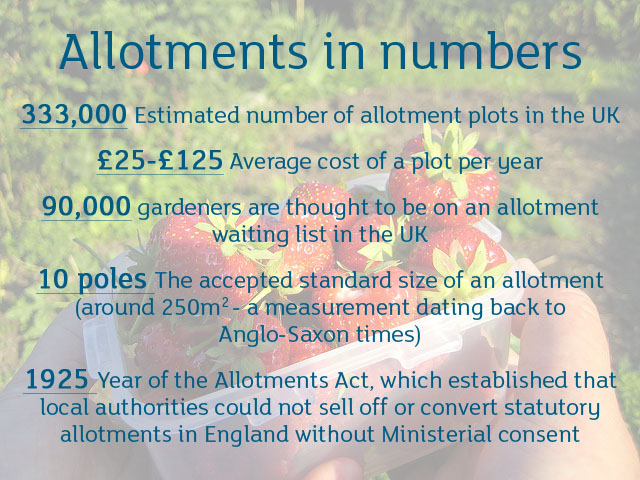
Find out more
For more information on allotments, visit the National Allotment Society at www.nsalg.org.uk
Follow Caz Graham on Twitter
Sign up for our Countryside Voice magazine by becoming a CPRE member

